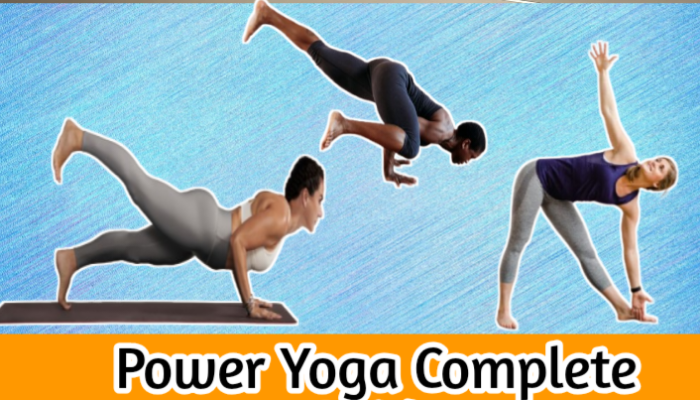Power Yoga is a dynamic, fitness-based form of yoga that emphasizes strength, flexibility, and endurance. Unlike traditional yoga, which may focus more on relaxation or meditation, Power Yoga is physically demanding, combining flowing sequences of poses (Vinyasa) with breath control (Pranayama).
1. History and Origin of Power Yoga
- Developed in the 1990s in the United States
- Influenced by Ashtanga and Vinyasa yoga
- Focused on creating a Western-style yoga practice emphasizing fitness, strength, and flexibility
- Unlike traditional yoga, it prioritizes physical intensity while retaining mindfulness
2. Key Principles of Power Yoga
2.1 Flow-Based Sequences
- Poses are connected in a continuous flow, linking movement with breath
- Enhances cardiovascular fitness and stamina
2.2 Strength and Core Engagement
- Focus on core stability, arm strength, and leg power
- Uses bodyweight exercises like Planks, Chaturanga, and Warrior sequences
2.3 Flexibility and Balance
- Includes dynamic stretches and balance poses
- Improves overall flexibility and joint mobility
2.4 Breath Awareness (Pranayama)
- Breath guides movement and flow
- Improves oxygenation, endurance, and mental focus
3. Benefits of Power Yoga
3.1 Physical Benefits
- Builds muscle strength (arms, core, legs)
- Enhances flexibility and balance
- Boosts cardiovascular fitness and metabolism
- Improves posture and body alignment
3.2 Mental Benefits
- Reduces stress and anxiety through mind-body connection
- Improves concentration, focus, and mental clarity
- Promotes discipline and self-confidence
3.3 Weight Management
- High-intensity sequences burn calories
- Supports fat loss and lean muscle development
4. Types of Poses in Power Yoga
4.1 Standing Poses
- Warrior I, II, III
- Triangle Pose
- Chair Pose
4.2 Core Poses
- Plank, Side Plank
- Boat Pose
- Chaturanga
4.3 Balancing Poses
- Tree Pose
- Eagle Pose
- Half Moon Pose
4.4 Backbends and Stretching
- Cobra Pose
- Upward Dog
- Bridge Pose
5. Step-by-Step Power Yoga Routine for Beginners
5.1 Warm-Up (5–10 minutes)
- Gentle stretches: Cat-Cow, Downward Dog, Forward Fold
- Focus on deep, rhythmic breathing
5.2 Flow Sequence (15–30 minutes)
- Sun Salutation A & B
- Warrior sequences
- Planks and core engagement exercises
5.3 Cool Down (5–10 minutes)
- Forward fold, seated twist, supine stretches
- Finish with Savasana (relaxation) to calm the body and mind
6. Tips for Practicing Power Yoga Safely
6.1 Listen to Your Body
- Avoid pushing beyond your limits
- Modify poses as needed
6.2 Maintain Proper Alignment
- Use props like blocks or straps for support
- Focus on form over speed
6.3 Breathe Properly
- Synchronize breath with movement
- Inhale during upward movements, exhale during downward movements
6.4 Consistency is Key
- Practice 3–5 times per week for best results
- Start with shorter sessions and gradually increase intensity
7. Common Challenges and How to Overcome Them
7.1 Muscle Fatigue
- Take breaks when necessary
- Strengthen weak areas gradually
7.2 Maintaining Balance
- Use a wall or props for support
- Practice balance poses regularly
7.3 Mental Fatigue
- Focus on breath and mindfulness
- Avoid comparing your progress with others
8. Who Should Practice Power Yoga?
- Fitness enthusiasts seeking strength and endurance
- Athletes looking to improve flexibility and core stability
- Beginners who want a high-intensity, structured yoga practice (with modifications)
- Not ideal for people with serious injuries without guidance
9. Conclusion
Power Yoga is a dynamic, full-body workout that combines strength, flexibility, and mindfulness.
- Physical Benefits: Builds muscle, improves posture, boosts metabolism
- Mental Benefits: Reduces stress, improves focus and mental clarity
- Lifestyle Integration: Can be combined with cardio, weight training, or meditation for holistic wellness
Tip: Start gradually, focus on alignment and breath, and practice consistently to experience the full benefits of Power Yoga.










